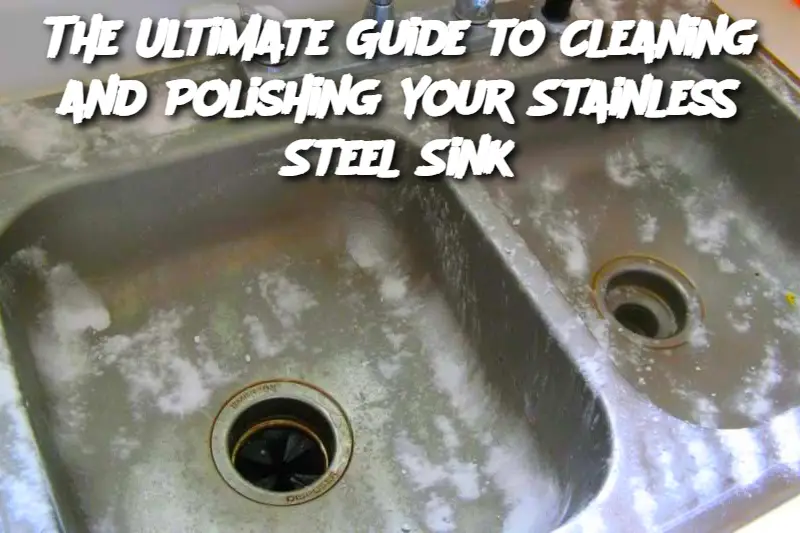Introduction:
Stainless steel sinks are a stylish and durable addition to any kitchen or bathroom. Their shiny, sleek finish can make your space feel modern and sophisticated. However, over time, they can accumulate stains, water spots, and soap scum, which can diminish their visual appeal. Cleaning and polishing a stainless steel sink doesn’t have to be a challenging task—just a little care and the right products will bring back its brilliance. In this guide, we’ll share the best methods for cleaning and polishing your stainless steel sink, helping you maintain its shine and longevity.
Ingredients:
Dish soap or mild liquid detergent
Baking soda
White vinegar
Olive oil (or a stainless steel polish)
Microfiber cloth or soft sponge
Warm water
Lemon (optional for added freshness)
Instructions:
Initial Rinse:
Begin by rinsing the sink with warm water to remove any loose debris. This will make it easier to clean the sink thoroughly.
Clean with Dish Soap:
Apply a small amount of dish soap or mild liquid detergent to a soft sponge or microfiber cloth. Gently scrub the surface of the sink in a circular motion to remove grease, food particles, and other residues. Pay special attention to areas around the faucet and drain where buildup is common. Rinse the sink with warm water to remove the soap.
Tackle Stubborn Stains with Baking Soda:
For tougher stains or water spots, sprinkle baking soda directly onto the sink surface. Use a damp sponge or cloth to scrub the area gently. Baking soda’s mild abrasiveness helps lift stains without scratching the stainless steel. Focus on spots with visible discoloration or residue. Once you’ve scrubbed the area, rinse the sink thoroughly.
Eliminate Water Spots with Vinegar:
If your sink has water spots or calcium buildup, pour white vinegar onto a clean cloth and wipe down the sink. The acidity of vinegar will break down mineral deposits, leaving the sink free from water stains. For extra shine, let the vinegar sit for a few minutes before wiping it off with a clean cloth.
Polish the Sink:
After the sink is clean, it’s time to polish it. Dab a small amount of olive oil onto a soft microfiber cloth and buff the surface of the sink in a circular motion. Olive oil will restore the sink’s natural shine and help create a protective barrier against future water spots. You can also use a specialized stainless steel polish for this step if preferred.
Final Rinse:
Once you’ve finished polishing, rinse the sink one last time with warm water to remove any excess oil or polish. Wipe it dry with a clean, dry microfiber cloth to prevent water spots from forming.
Tips for Serving and Storing:
Regular Maintenance:
To keep your stainless steel sink looking its best, clean it regularly using the mild dish soap and water method. This will help prevent the buildup of grease, soap scum, and stains.
Avoid Harsh Chemicals:
Stay away from harsh chemicals like bleach or ammonia, as they can damage the surface of your stainless steel sink. Stick to natural ingredients like vinegar and baking soda for the best results.
Dry the Sink After Use:
After each use, wipe down the sink with a clean cloth to prevent water spots and streaks. This helps maintain the sink’s shine and prevents mineral deposits from forming.
Variants:
Lemon Freshening:
If you want a fresh, citrusy scent, add lemon juice to your cleaning routine. The acidity of the lemon juice can help remove stains, and its natural fragrance will leave your sink smelling fresh.
Stainless Steel Cleaner Alternative:
If you prefer commercial cleaning products, there are many stainless steel cleaner options available. Look for a product that is free from abrasives and is safe for polishing. These cleaners can add extra protection and shine to your sink.
Heavy-Duty Cleaning for Rust Stains:
For rust stains or deeper grime buildup, you can make a paste with baking soda and water. Apply the paste directly to the stain, let it sit for 10-15 minutes, then scrub gently. This method can help lift tough rust marks without damaging the finish.
ADVERTISEMENT

